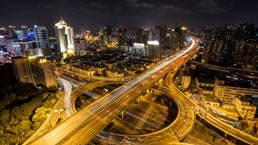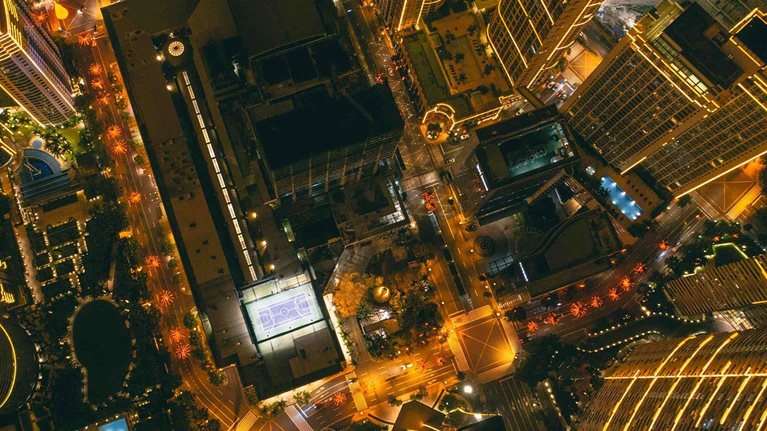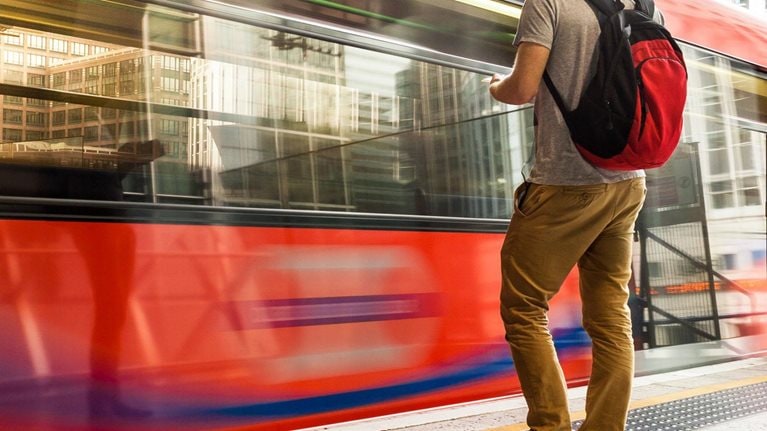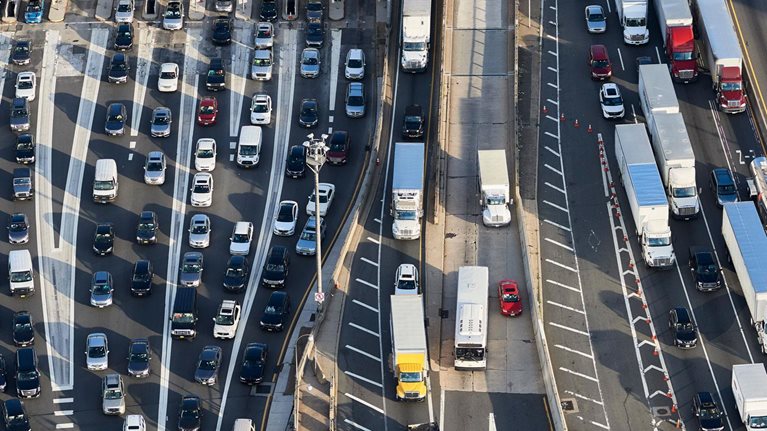A convergence of digital technologies—location services, sensors, the Internet of Things—is reaching critical mass of acceptance in the digital world such that they will soon be deployed in physical spaces. But many barriers exist—including “not in my backyard” mentalities, bureaucratic misalignment, privacy concerns, a lack of funding that is only intensifying, and a lack of understanding of what’s possible. In this Q&A, former New York City Deputy Mayor and current Sidewalk Labs Chairman and CEO Dan Doctoroff discusses what it will take to improve future cities—from political courage to flexible infrastructure that acts as a platform for development.
Stay current on your favorite topics
McKinsey: Sidewalk Labs is working with cities to develop ideas through teams of urbanists and technologists. What promising or exciting learnings can you share from these endeavors?
Dan Doctoroff: Our hypothesis is that a combination of technologies, thoughtfully applied and integrated, can fundamentally alter nearly every dimension of quality of life in an urban environment. To get there, we’ve surveyed innovations across a range of domains—mobility, infrastructure, buildings, public space, social and community programs, even governance—that are available today or will be soon. We’re convinced that by implementing a set of technologies—autonomous vehicles, modular building construction, or new infrastructure systems—we can, for example, reduce cost of living by 15 percent. With new mobility services and radical mixed-use development that brings homes near work, we can give people back an hour in their day. With new materials and weather-mitigation technology, we can improve the usability of outdoor space in a cold climate. With adaptable loft structures and outcome-based codes, we can make buildings dramatically more flexible.
McKinsey: How will Sidewalk Labs bring this future to bear?
Dan Doctoroff: We have just announced a new partnership with Waterfront Toronto to develop the city’s Eastern Waterfront in a way that could serve as a model for what this set of technologies across all these different dimensions could actually produce in a real place. We’re calling this joint venture Sidewalk Toronto, and we want to achieve five objectives:
- Build the most innovative district in the world.
- Demonstrate that we really can meaningfully improve quality of life.
- Prove that this type of urban space is a place that people want to live and to which employers want to relocate.
- Show that this can be a platform for urban innovation clusters on which people can develop new products and services.
- Prove that this is replicable in other neighborhoods in Toronto and cities around the world. We don’t expect somebody to lift up the idea and plop it down in another location, but we do hope to serve as a model. Cities are eager to learn from other cities. I saw this when we opened up the first section of New York’s High Line in 2008; within a year, there were 36 “High Lines” under development around the world. And we believe that if we thoughtfully document what we’re doing here, and obviously assuming that we’re successful in achieving these quality-of-life benefits, other cities will begin to take greater risks in deploying these ideas.
Of course, it will take time; we’re talking about something that could eventually house as many as 100,000 people—and maybe as many jobs. For that sort of absorption, you’re talking 15 to 20 years, which really is not a long time in the world of infrastructure development. Consider that we laid the groundwork for New York’s Hudson Yards, the largest private real estate development in US history and the largest NYC development since Rockefeller Center, in the city’s Olympic bid back in 1996. In that case, we saw the Olympic Games as a catalyst for getting things done that were politically impossible or financially unfeasible by getting deadlines in a globally significant, competitive process.
McKinsey: What type of political leadership is required—at a national, state, and metropolitan level—to enable innovation and transformation at scale in cities?
Dan Doctoroff: At all political levels, it’s going to take visionary leadership that understands the potential and has the technical capacity to evaluate both the gains and risks at stake. More importantly, political leaders need the courage to overcome the natural resistance that comes with any changes. I’ll give you an example: In 2007, when I was deputy mayor of New York, we made a proposal for congestion pricing. London has it, Singapore has it, Stockholm has it. We thought it was a no-brainer for Manhattan, because every analysis we did found that only 5 percent of commuters from the outer boroughs drove into Manhattan. The other 95 percent took mass transit. Under our proposal, each member of that 5 percent would pay $8 for crossing into and out of Manhattan between 8 a.m. and 8 p.m., and the funds we raised would be completely dedicated to improving the mass transit system.
We could not get it done. The 5 percent squawked louder, and the decision makers in the state legislature listened to them. In the end, it’s harder for people to appreciate a positive than it is to fear a negative, particularly when those benefits—train station upgrades and enhanced bus service, for example—are harder to describe.
So you need leaders who are capable of analyzing the problem, understanding the technology, and communicating the benefits and the costs in an honest way—and who are willing to take the political heat from some percentage of the population. That courage is unfortunately not as common as we’d like.

Global Infrastructure Initiative
Convening global leaders in infrastructure and capital projects in pursuit of new solutions
McKinsey: Technology has a dramatically shorter lifecycle than most infrastructure assets, which are often built to last 100 years or more. How can we ensure that infrastructure will be able to adapt to new tech developments, scale rapidly, and accommodate market disruptions?
Dan Doctoroff: You have to plan and design the infrastructure so that it is as flexible as possible. We use the analogy of the smartphone as a platform. What makes the smartphone magical is not necessarily the hardware, which evolves over time with new releases, or the software, which is upgraded every few months. It’s really the fact that there are millions of application developers who are using the infrastructure to create something that no one imagined before.
You have to think about the city as a platform. The hardware equivalent is the traditional infrastructure—the roads, utilities, and now digital infrastructure. The infrastructure itself must be as modular, replaceable, and upgradeable as possible. For example, take utility networks in cities. Today, if you want to change or update a utility, you have to dig up the streets, which is very disruptive to pedestrians and traffic and very expensive. But if you designed a city with accessible utility channels, you could make it easier and cheaper to upgrade utility networks and reserve space for new types of connections we haven’t yet imagined. Then you need design guidelines to bring coherence and consistency. Finally, you need some launch applications to make the place inhabitable at the beginning, such as traffic management systems or air-quality monitoring systems. But you can’t view this as a top-down exercise in creation. What makes it work is thousands of businesses, local organizations, researchers, and others building on top of the platform, responding to or anticipating new tastes, technologies, and needs, keeping it current and always evolving.
McKinsey: Cities worldwide are facing massive supply constraints—from housing to education to transportation. How can technology help ensure equitable access to the resources and improve livability? How do we ensure people aren’t left behind?
Dan Doctoroff: New technologies offer the potential to reduce inequality on multiple levels. The work that we’ve done, particularly in housing and transportation, indicates that you can meaningfully reduce the cost of living, improve health outcomes, and increase access to opportunities. For example, consider that today, 30 to 40 percent of the average American city is consumed by roadways and parking. If you can carve that back by half, which we believe is possible if autonomous transit fleets take hold, then you create meaningfully greater open space, which improves access to the outdoors and creates new opportunities to build housing. And that’s just one technological advance—a significant one, but there are so many more.
Photo courtesy of Sidewalk Labs


